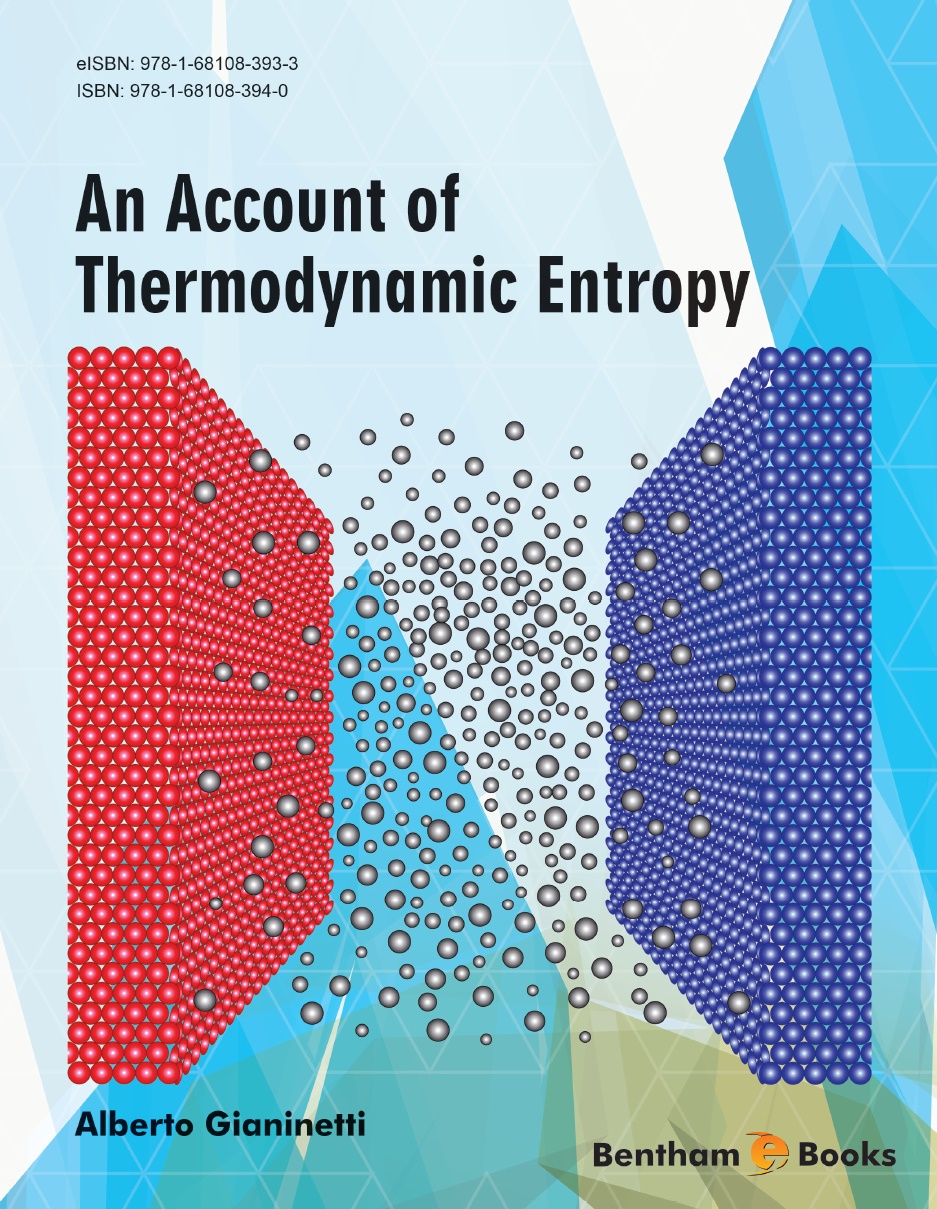The second law of thermodynamics is one of the most fundamental laws that govern our universe and is relevant to every scientific field studying the physical world. Nonetheless, the second law’s application makes constant reference to entropy, one of the most difficult concepts to work with, and this is the reason why they are discussed almost exclusively in highly specialized literature.
Thermodynamic entropy has been rigorously examined by classical, statistical, and quantum mechanics, which provide several mathematical expressions for calculating it under diverse theoretical conditions. However, the concept of entropy is still difficult to grasp for students and even more for educated laymen. As a scientist in plant biology, I fall into the second category with regards to this subject. Indeed, I first wrote this introductory book for myself; to approach my work with greater awareness about its physicochemical implications, I felt I needed better insight into the thermodynamic considerations that underpin spontaneous processes and allow plants, as well as humans, to achieve and improve the capability to exploit the environment to their benefit. When I consulted the literature on this topic, I found that although there are very many papers and books on the subject, the thorough explanation that I was looking for was scattered throughout them. I then began taking notes, and when I was finally satisfied I realized that, once organized and suitably presented, they were potentially interesting for other people looking for detailed, but not too advanced, clarifications on entropy and the second law of thermodynamics. I believe that a better understanding of these concepts requires a more satisfactory verbal explanation than is generally provided, since, in my opinion, a verbal approach is the one closer to the understanding capability of students and non-experts. This is why this book is focused on providing a verbal account of entropy and the second law of thermodynamics. In this sense, I deem that, beside to the basic mathematical formulations, a consistent explanation in verbal terms can be very useful for the comprehension of the subject by people who do not have a full understanding of it yet. Thus, I eventually came out with the present work, targeted to students and non-experts who are specifically interested into this matter and have a basic knowledge of mathematics and chemistry.
With this book I attempt to offer an account of thermodynamic entropy wherein verbal presentation is always a priority. Basic formal expressions are utilized to maintain a rigorous scientific approach to the matter, though I have always tried to explain their meaning. The essential outlines for a verbal account of thermodynamic entropy are summarized in the last chapter. Such an outline is how I wish I had been taught the core concepts of this matter when I was first introduced to it. Therefore, I hope it can be of help for a general introduction to the second law of thermodynamics and the basic concept of entropy. The main text of the present work aims to demonstrate the validity of the proposed verbal presentation from a rigorous, scientific point of view, but it also represents a resource for insights on specific topics since the verbal approach is adopted throughout the text. Several examples illustrate the concept of entropy in its different expressions. A number of footnotes provide further clarification or insight into the content in the main text and the reader may skip them on a first reading.
With regard to the contents of the this work, I have highlighted that the best way to conceive thermodynamic entropy that I found in the literature was that of a function of “energy spreading and sharing” as suggested by physicist Harvey S. Leff. Herein I try to take this line of thought further to verbally unravel the concept of thermodynamic entropy and to provide a better verbal account of it. I propose that a useful definition of entropy is “a function of the system equilibration, stability, and inertness”, and that the tendency to an overall increase of entropy set forth by the second law of thermodynamics should be meant as “the tendency to the most probable state”, that is, to a macroscopic state whose distribution of matter and energy is maximally probable (according to the probabilistic distributions of matter and energy, and also considering the eventual presence of constraints). Thus, with time, an isolated system settles into the most equilibrated, stable, and inert condition that is actually accessible. I have provided a wide overview to introduce the rationale for these definitions and to show that they are consistent throughout the various levels and applications of the concept of entropy. The key idea is to extract from known formal expressions of entropy the essential verbal outlines of this concept and to use them to elaborate a verbal presentation of entropy that can be of general utility to non-experts, as well as to educators.
Conflicts of Interest
None.

